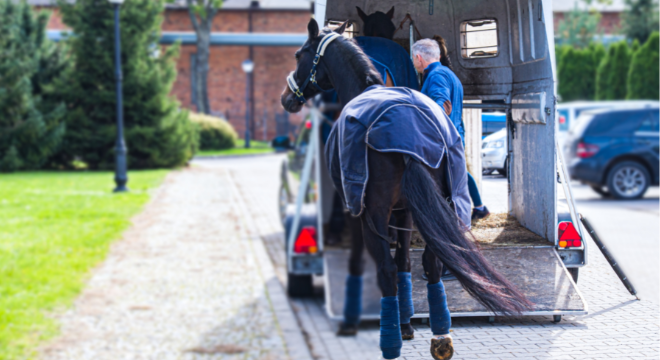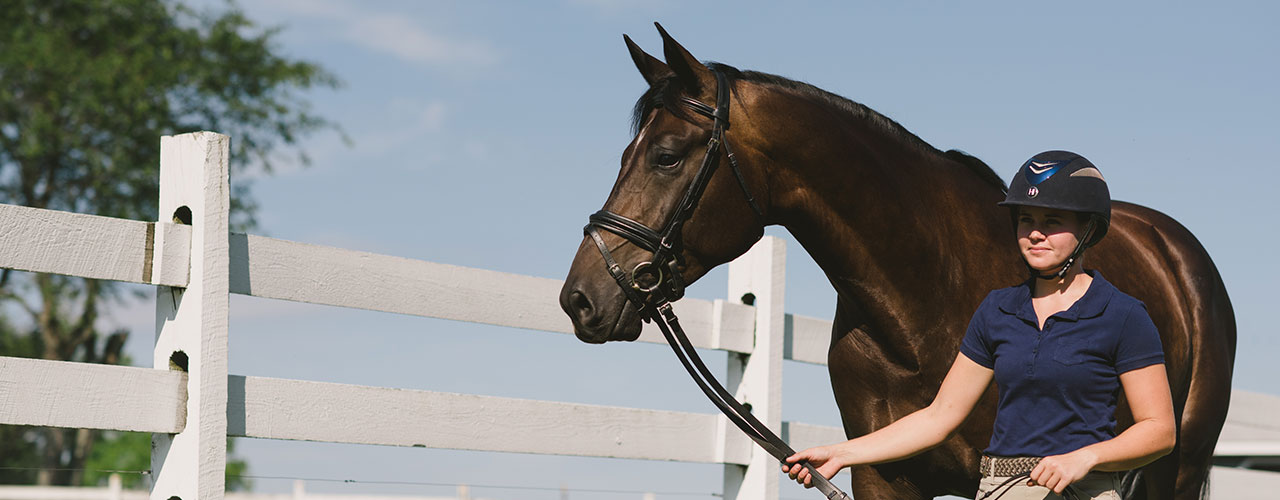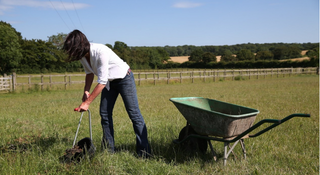
Have Horse Will Travel
Transporting horses safely needs careful planning. Not only do you need a suitable trailer or horsebox but you also need the appro...
15 June 2022
Read More
Buying a horse involves determination, dedication, and often a liberal helping of heartache. The horse of your dreams, as seen in the advertisement you read and those videos you were captivated by may be nothing like the horse you have just driven 200 miles to view. The ideal dressage diva may prefer to make like a camel in the arena when you try him and that steady family hack you had your eye on may refuse to take you beyond the yard gates on your test ride.
Without a crystal ball it’s impossible to know how a new human/equine relationship is going to pan out over the months and years but a pre purchase examination can help to identify as far as is reasonably possible any pre-existing problems before you commit to ownership of a new member of the yard.
Reducing the risks
The purpose of a pre purchase examination, sometimes referred to as a ‘vetting’ is to reduce risks for the buyer by identifying any pre-existing problems that may prevent the horse from doing the job for which it is being purchased. Conducted by a vet, it involves a set series of examinations carried out in five stages. Just the first two stages may be used for a young horse that has not yet been backed or for a broodmare – this is referred to as a two stage or limited examination.
This preliminary examination includes looking at the horse while it is at rest and checking passport and microchip. Eyes, heart, teeth, legs, conformation, lumps, bumps and scars will be inspected too.
Stage 2
The next phase of the PPE involves walking and trotting in hand, in straight lines and in tight turns and on the lunge, on a firm, flat surface. Some vets may also perform a flexion test to check for any possible joint or soft tissue problems. In this test a leg is held up for between 45 and 60s and then the horse is immediately trotted away in a straight line. The result is considered positive if the horse takes more than 3-5 steps to return to a normal gait. This stage also involves an examination to identify any neurological gait abnormalities (e.g. a ‘Wobbler’).
Stage 3
The 3rd stage is usually conducted with the horse under saddle, with the intention of assessing more subtle problems which may only be evident during and after exercise. Problems with the back, lameness, gait, wind and heart, as well as any unusual actions may become evident. This phase will be tailored to the horse and its intended purpose, as well as the facilities available.
Stage 4
The horse is examined during and after recovery from exercise. In particular this phase may identify heart and lung issues which were not previously evident.
Stage 5
During this last stage the horse will be trotted in hand to observe movement post-exercise. In some cases, the vet may wish to repeat the stage 2 tests for a very thorough reassessment.
Extra tests and examinations
Blood test
It’s usually advisable for the purchaser to ask for a blood sample to be taken from the horse, which will be stored for six months. This is a safeguard in case a question arises about medications such as sedatives, painkillers or steroids having been used at the time of the PPE.
Diagnostics
In some cases, as requested by the owner or by the insurance company who will be providing cover for the horse, a more detailed picture of some aspects of the horse may be required. This is often the case for high value competition horses and may involve X-rays and/or ultrasound scans for limbs and an endoscopy to look at the upper airways.
What happens after a PPE?
Once the PPE has been completed the vet will discuss the outcome with the owner to see if any further or repeat procedures may be needed. The PPE certificate will then be written up to include a report of the various tests and findings, giving the potential purchaser further, important details about the horse to help them decide whether or not to proceed with the purchase.
It’s important to understand that a PPE is a reflection of the vet’s opinion at that time. Although it is often stated that a horse ‘passed’ or ‘failed’ a vetting, the procedure is actually a risk assessment and gives a statement that ‘on the balance of probabilities the conditions stated do or do not prejudice the horse’s suitability for the intended use’. Thus, a horse may be regarded as likely to be ‘unsuitable’ for eventing but ‘suitable’ for hacking. Crucially, it can never be a guarantee for the future, only a reasonable assessment based on the information available at the time. Further, what is acceptable to one owner may not be acceptable to another, therefore, it is always advisable to organise your own vetting, specific to your needs. Remember, if the horse is to be insured the PPE also needs to be discussed with the insurance company prior to purchase to identify any increased risks, exclusions and premiums which may be incurred.
Finding the right horse to buy may take considerable effort but it’s worth it when you bring home the equine partner of your dreams and embark on the magical journey of fulfilling all your ambitions in the saddle.
https://www.rossdales.com/services/sport-and-leisure-horses/pre-purchase-examinations
MM-11428

Transporting horses safely needs careful planning. Not only do you need a suitable trailer or horsebox but you also need the appro...
15 June 2022
Read More
OK so it’s probably not on the top of your list of favourite horse-related jobs but don’t under-estimate the importanc...
18 April 2022
Read More
Quality of Life is an important consideration for any equine, whatever their age, health or circumstances.
20 December 2021
Read More